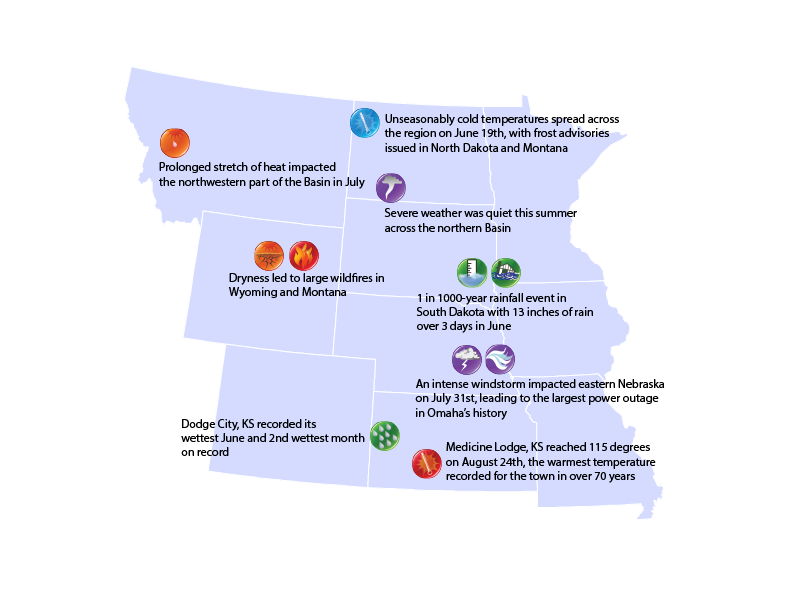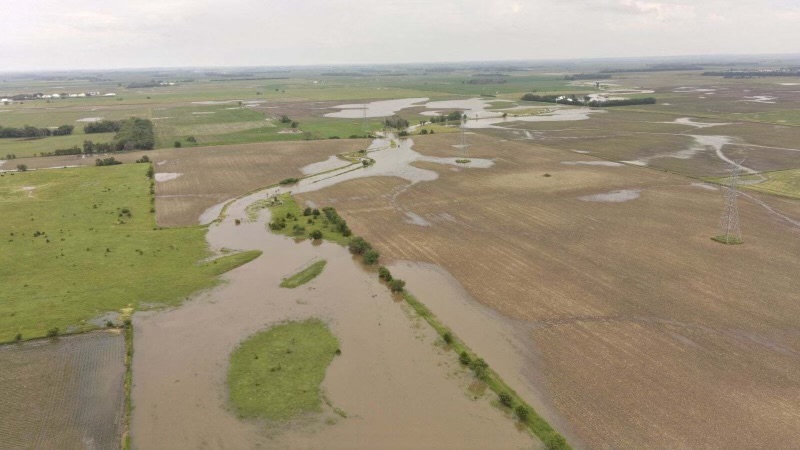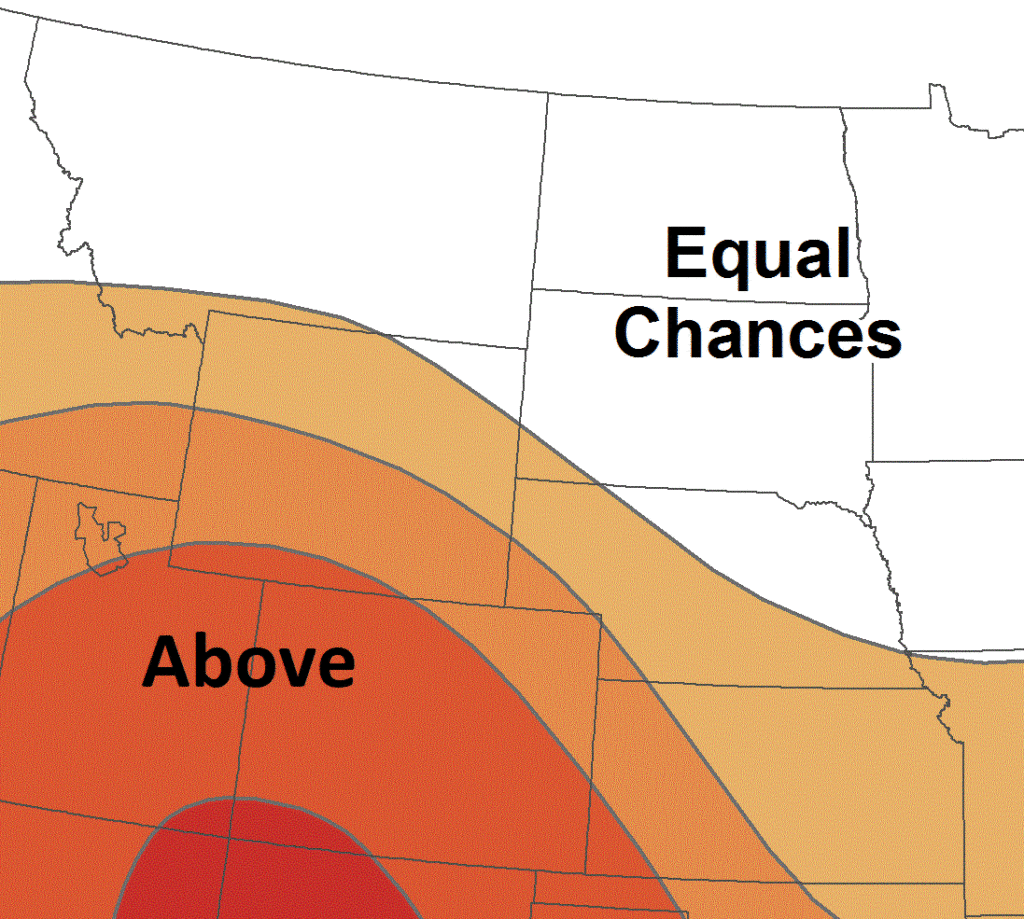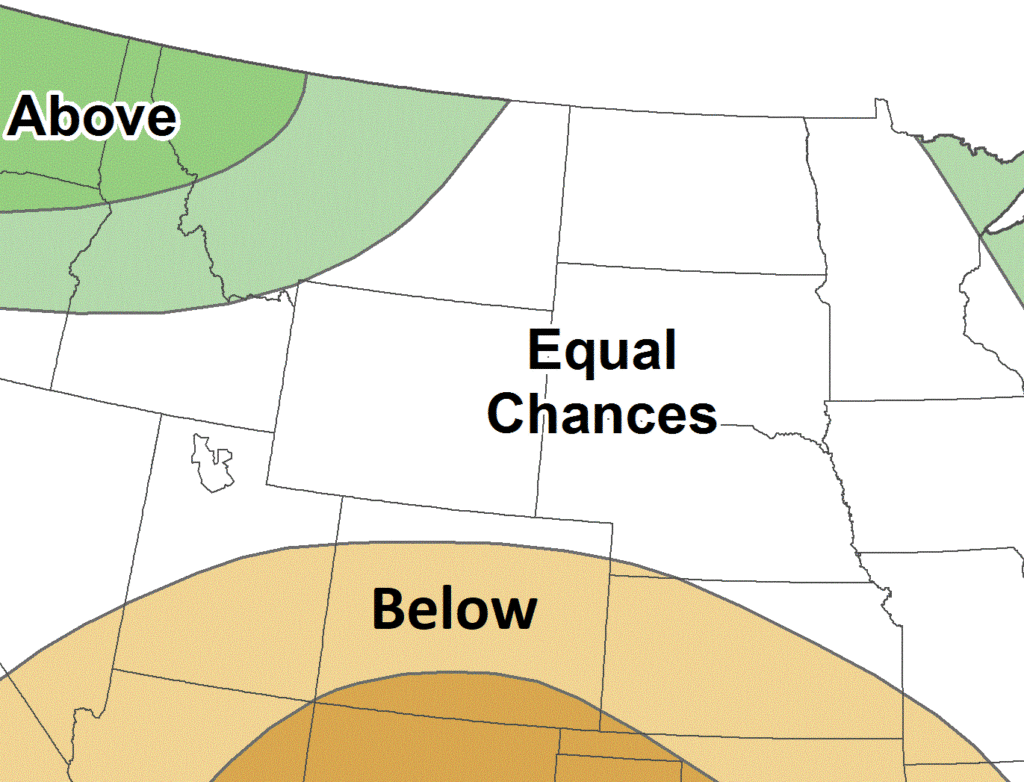Regional Significant Events for June – August 2024

Highlights for the Basin
After starting off July with cooler temperatures, conditions rapidly flipped
to scorching hot in the upper parts of the Basin. Kalispell, Montana recorded
17 consecutive days of highs above 90 degrees, beating the previous record by 4 days. The heat was not just limited to lower elevations, temperatures reached 86 degrees in parts of Yellowstone National Park above 9,000 feet.
Significant flooding occurred after thunderstorms hit in parts of South
Dakota and Iowa on June 20-22. Multiple river gauges in the Big and Little Sioux Rivers observed record flows after the heavy rains. River stage records were shattered by over 7 feet near Sioux City and other locations surpassed flows set during the floods of March 2019.
Regional Climate Overview for June – August 2024
Temperature and Precipitation Anomalies
Overall, temperatures were slightly above normal this summer for most of the
Basin. June brought warmer temperatures across the southern Basin, while July was exceptionally hot in Montana and the western Dakotas. August brought near-normal temperatures for large parts of the region. 20 counties in southern and eastern Colorado ranked in the top 5 warmest this summer.
Precipitation this summer was mixed, with areas in the northern High Plains
missing out on most of the rain. June and August were fairly wet, however, July featured minimal precipitation in portions of Montana and Wyoming. Weston County, Wyoming and Custer County, South Dakota ranked in the top 4 driest this summer.


and Percent of Normal Precipitation (bottom) for the Summer of 2024
Changes in Drought Conditions
The map below shows the areas of increasing (yellow shading) and
decreasing (green shading) categories of drought. Drought conditions rapidly
intensified, with up to 4 classes of degradation in parts of Montana and
South Dakota. Exceptional drought (D4) was reintroduced in Montana for
the first time in two years.
June 4 to September 3, 2024

Regional Impacts for June – August 2024
Agriculture
Several hailstorms across central Nebraska ruined thousands of acres
of crops, putting a damper on what is expected to be well above-average
yields this year. Despite drought in both states, reports of winter wheat
yields were positive out of Kansas and South Dakota. Pasture conditions in
Montana and Wyoming are abysmal, with over 50 percent reported to be in
poor to very poor shape.
Flooding
The exceptional rainfall and subsequent flooding in southeast
South Dakota and northwest Iowa led to significant impacts. Spencer,
IA was completely underwater in the aftermath, while a railroad bridge
connecting the two states was swept away. Downstream, homes in McCook
Lake, South Dakota were damaged and Interstate 29 was closed.
Wildfires
Persistent dryness and warmer temperatures this summer led to
several massive wildfires in the west. Over 500,000 acres have burned in
multiple fires in northern Wyoming and southern Montana. Along the
foothills in Colorado near Loveland, nearly 10,000 acres burned and
numerous homes were destroyed by a fire in late July.



Regional Outlook for October – December 2024
According to NOAA’s Climate Prediction Center, the outlook for the
upcoming season indicates increased chances of above-normal
temperatures across the southern and western portions of the basin.
Slightly elevated chances of below-normal precipitation are present in
Colorado and Kansas, above-normal precipitation is slightly favored in
western Montana.
As of September 12th, there is a 71 percent chance of La Nina developing
during the September to November period and will continue into the
winter months. The potential of warmer temperatures and below normal
precipitation this fall across drought-stricken Kansas could lead to further
issues for winter wheat.
Temperature

A: Above normal, B: Below normal
Precipitation

A: Above normal, B: Below normal
MO River Basin Partners
High Plains Regional Climate Center
www.hprcc.unl.edu
National Drought Mitigation Center
http://drought.unl.edu/
National Integrated Drought Information System
https://www.drought.gov/
NOAA NCEI
www.ncdc.noaa.gov
NOAA NWS – Central Region
www.weather.gov/crh
NOAA NWS Climate Prediction Center
www.cpc.ncep.noaa.gov
NOAA NWS Missouri Basin River Forecast Center
www.weather.gov/mbrfc
American Association of State Climatologists
https://www.stateclimate.org/
U.S. Army Corps of Engineers
www.nwd-mr.usace.army.mil/rcc/
U.S. Bureau of Reclamation
https://www.usbr.gov/
USDA Natural Resources Conservation Service
www.nrcs.usda.gov
USDA Northern Plains Climate Hub
www.climatehubs.oce.usda.gov
Bureau of Indian Affairs – Great Plains Region
www.bia.gov/regional-offices/great-plains
Download PDF below


